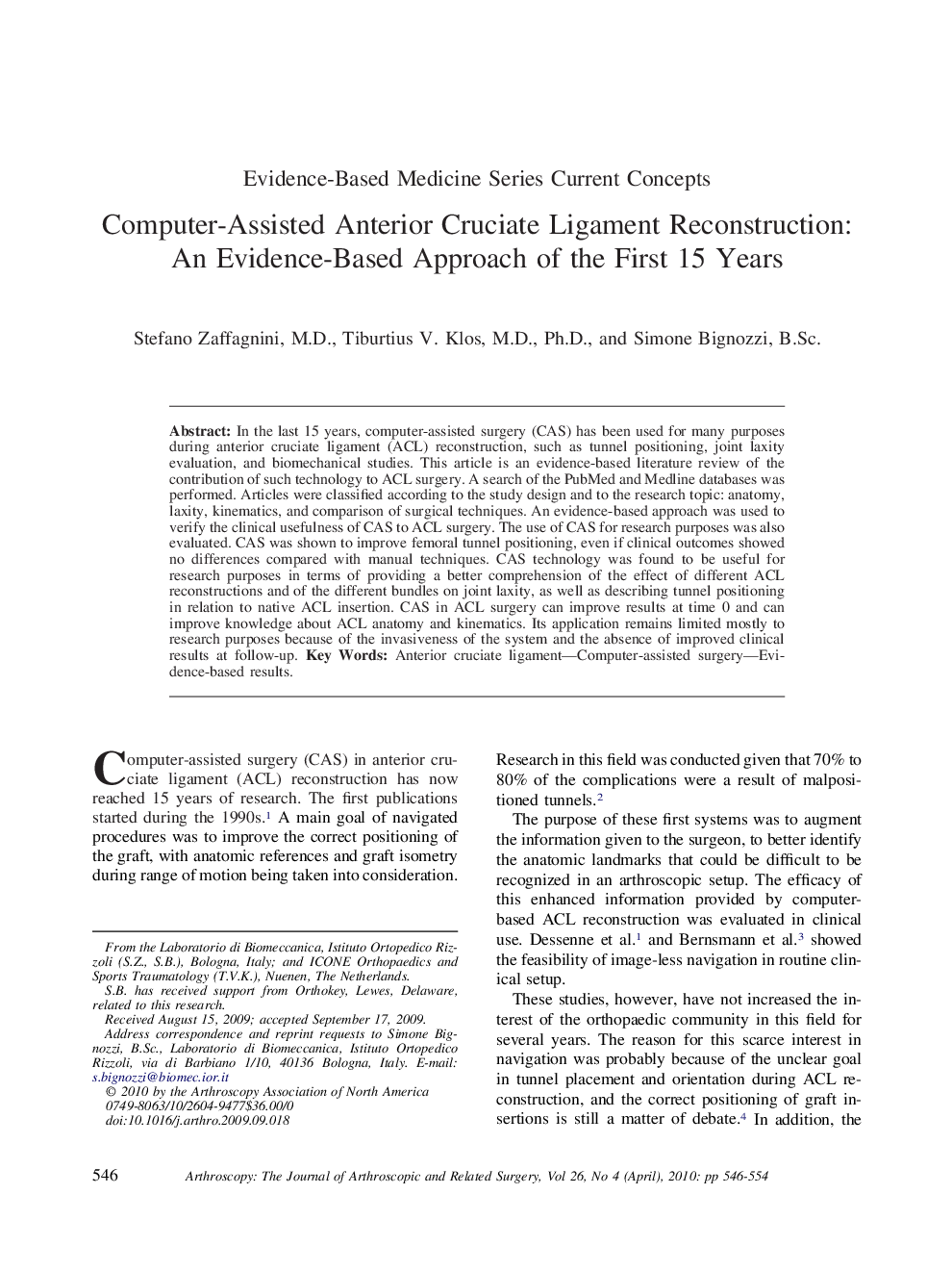| Article ID | Journal | Published Year | Pages | File Type |
|---|---|---|---|---|
| 4044509 | Arthroscopy: The Journal of Arthroscopic & Related Surgery | 2010 | 9 Pages |
In the last 15 years, computer-assisted surgery (CAS) has been used for many purposes during anterior cruciate ligament (ACL) reconstruction, such as tunnel positioning, joint laxity evaluation, and biomechanical studies. This article is an evidence-based literature review of the contribution of such technology to ACL surgery. A search of the PubMed and Medline databases was performed. Articles were classified according to the study design and to the research topic: anatomy, laxity, kinematics, and comparison of surgical techniques. An evidence-based approach was used to verify the clinical usefulness of CAS to ACL surgery. The use of CAS for research purposes was also evaluated. CAS was shown to improve femoral tunnel positioning, even if clinical outcomes showed no differences compared with manual techniques. CAS technology was found to be useful for research purposes in terms of providing a better comprehension of the effect of different ACL reconstructions and of the different bundles on joint laxity, as well as describing tunnel positioning in relation to native ACL insertion. CAS in ACL surgery can improve results at time 0 and can improve knowledge about ACL anatomy and kinematics. Its application remains limited mostly to research purposes because of the invasiveness of the system and the absence of improved clinical results at follow-up.
